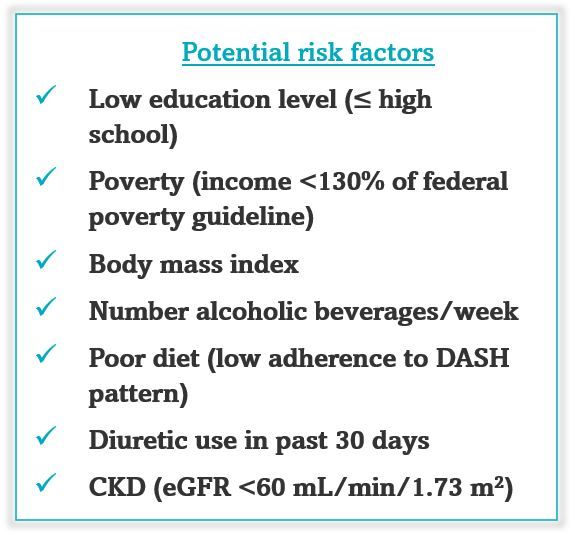Gout Found More Prevalent among Black Adults in Nationally-representative Population
Racial disparities in gout prevalence could be explained by diet, social determinants of health, kidney disease, and other factors that suggest interventions.

Gout appears to be more prevalent among adults who self-report Black race vs White race according to findings from a nationally representative race- and sex-specific study published JAMA Network Open.
The research team also found attenuation of the observed differences after adjusting for risk factors including diet, body mass index, chronic kidney disease, and poverty.
Emerging data suggest both hyperuricemia and gout may have become more prevalent among US Black adults, and particularly Black women, than in the historically affected population of White adult men, write the authors. But general population data on racial differences and potential contributing factors are scarce, add investigators led by Natalie McCormick, PhD, a research fellow at Massachusetts General Hospital in Boston.
McCormick and team also point out that potential racial differences in prevalence may be a result of differences in nongenetic social determinants of health rather than “ancestry-specific differences in genes regulating urate handling.”

For a more comprehensive understanding of sex-specific factors driving these disparities, McCormick and colleagues used data from the National Health and Nutrition Examination Survey (NHANES) from 2007 to 2016. Participants self-reported a physician diagnosis of gout during NHANES home interviews and serum urate levels were measured at enrollment.
Data were included for 18 693 participants, including 3304 Black women, 6195 White women, 3085 Black men, and 6109 White men whose mean ages were 44.8 years, 50 years, 43.6 years, and 48.2 years, respectively.
Among their results the investigators found that Black participants tended to be younger than White participants with higher poverty and lower education levels. Further, all risk factors for gout and hyperuricemia were more prevalent among Black than White adults with the exception of alcohol consumption, which was greater among White adults.
The team reports an age-standardized prevalence of gout during the study period of 3.5% (95% CI, 2.7%-4.3%) in Black women and 2.0% (95% CI, 1.5%-2.5%) in White women (age-adjusted odds ratio [OR], 1.81 [95% CI, 1.29-2.53]). Among men the prevalence was higher among Black participants (7.0% [95% CI, 6.2%-7.9%]) when compared with White participants (5.4% [95% CI, 4.7%-6.2%]; age-adjusted OR, 1.26 [95% CI, 1.02-1.55]).
Of particular interest McCormick et al report that the associations diminished after adjustment for poverty, diet, BMI, and chronic kidney disease (CKD) among all women and for diet and CKD among all men. Further, the associations became null after adjustment for all risk factors (age-adjusted OR, 1.05 [95% CI, 0.67 - 1.65) and 1.05 [95% CI, 0.80 - 1.35] among women and men, respectively). The end point findings for hyperuricemia were similar.
WOMEN
Among women the only risk factor not associated with gout in age- and race adjusted analysis was education level. Poverty, the team reports, was associated with 2.4 times greater odds of gout and use of diuretics with 2.2 greater odds. Age adjusted mean BMI was higher among Black women a larger proportion of Black women reported incomes below the poverty line. All risk factors, they add, were found more frequent or elevated in Black vs White women save alcohol consumption which was lower among Black women.
MEN
McCormick and colleagues report the majority of the identified risk factors, including alcohol consumption, were associated with gout among men, although there was no significant association with poverty as was found in women. Racial differences in BMI and poverty status were smaller between Black and White men than between women and so adjustment for those factors among men did not eliminate the association between race and gout.
Commenting on their findings the authors write that the differences revealed in prevalence of gout between Black and White adults may be explained by "racial differences in key socioclinical factors, including excess BMI, poverty, and poor diet as well as CKD in women and by CKD, poor diet, and diuretic use in men.
“Culturally informed interventions designed to address adiposity and kidney disease and improve diet quality while recognizing the role of poverty in gout among women could help reduce these disparities,” they conclude.
Reference: McCormick N, Lu N, Yokose C. Racial and sex disparities in gout prevalence among US adults. JAMA Network Open. 2022;5(8). Published online August 15, 2022. doi:10.1001/jamanetworkopen.2022.26804

